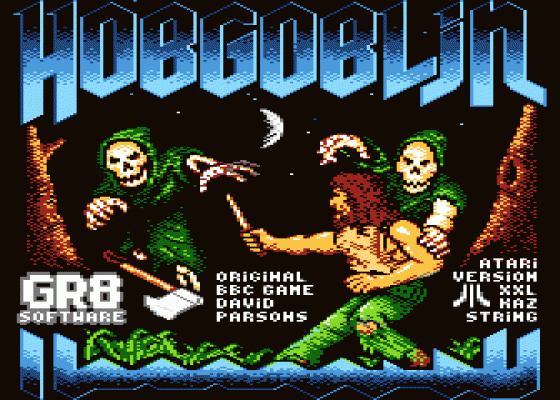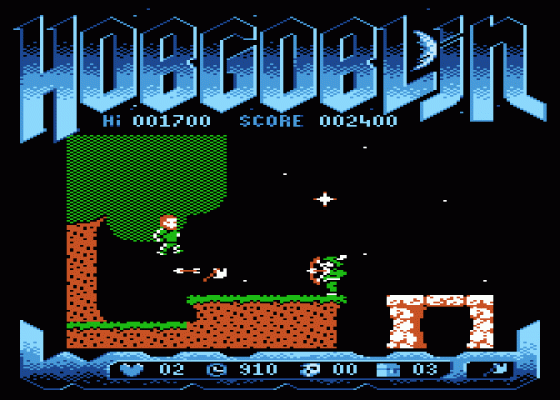
Micro Mart
 13th November 2008
13th November 2008
Categories: Review: Software
Author: Shaun Bebbington
Publisher: GR8
Machine: Atari 800XL/130XE/65XE/XE Console
Published in Micro Mart #1030
This week, Shaun's been off to dispatch evil ghouls and ghosts back into the abyss...
Retro Mart: Here In Spirit
GR8 Software's inaugural real-media release was first developed by David Parson and Chris Edwards and released on the BBC Micro, Amstrad CPC, Commodore 64 and Sinclair ZX Spectrum back in 1991 by the budget software house Atlantis Software. Not considered as one of the best games to be released in the early 90s, the only worthwhile version of the game (by a small margin) is the one that appeared on the old Beeb; the best of a bad lot, one might say.
This was a 'poor man's Ghosts 'N Goblins'; bereft of the push scroller element to the gameplay, the same worthwhile game mechanic or its replay value. So why would XXL and company bother to convert such a frankly mediocre game in the first place? The emulator version of Hobgoblin was released on Halloween, a few weeks ago. It, of course, begs the question: Trick or treat?
Fitting in nicely with the annual theme, though being much less scary than Yvette Fielding from TV's Most Haunted, Hobgoblin sees our hero on a quest to recover the sacred Golden Orb, which in turn will make his home, Altoris, a safe place once more.

This is done by traversing around 60 screens packed with ghouls, ghosts, Robin Hood-alikes, pyjama-wearing monsters and others of a less than savoury nature. You're initially armed with an unlimited supply of piercing knives which will dispatch your monstrous foes with one or more hits. Occasionally, the evil hordes leave behind bonus items, such as more effective weapons, gold pieces or skulls, which should be collected. Once you've picked up five items of treasure (or happened to collect a better weapon), your killing implement is upgraded. You may also leap over oncoming nasties, though sadly there is no way to crouch, which would have been handy at certain points in the game.
Apparent improvements above the BBC version include title and in-game music, extra graphics, a fairer time limit, more powerful weapons, and three speed settings. Despite all of these, the problems remain the same. Your weapon shoots sporadically, meaning that it can be difficult to judge exactly when it will be thrown. This might not seem like such a problem, but to kill off some of the enemy sprites requires a pixel perfect aim and good timing. This isn't helped by iffy collision detection. And with only two projectiles being thrown at a time that will only travel a short distance (unless you grab the relevant bonus), you have a situation in which luck more than judgment aids progression into the game.
This wouldn't be so bad if you restarted at the same point where your hero lost a life, but the restart points can cause further frustration. Also, there are random events generated; for instance, a ghoul may occasionally shoot back at you with an axe or knife, so if you restart at a point where one of the foul binary beings is heading straight towards you, you will need Jedi-like reflexes to dodge the oncoming projectile should this happen.

Only three lives and no continues means that frustration often turns into a swift reset to find something more enjoyable to play. It's not all bad, and there are at least the foundations of a fun game here, but GR8 should have concentrated on tightening up the collision detection while making a more reliable and predictable control routine for hurling the weapon at the oncoming roamers.
These two things would probably have made the whole experience more worthwhile, and lessened the frustrations that I have often felt trying to progress through this binary world. While the limited-edition cartridge might be a treat for collectors, I doubt many will still be playing this game after a month or so of ownership.
Indeed, that sums up this production nicely: one for the typical collector more than the typical game player.






